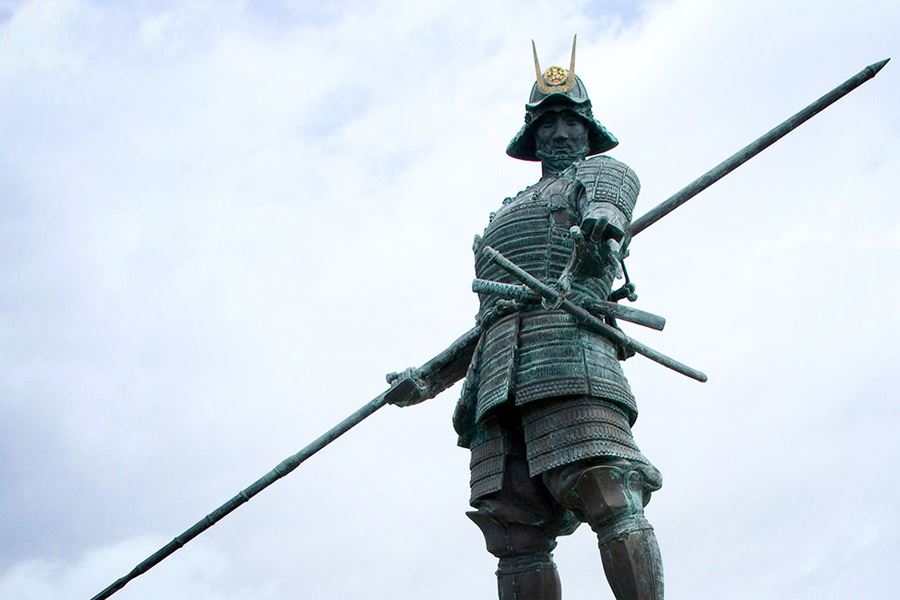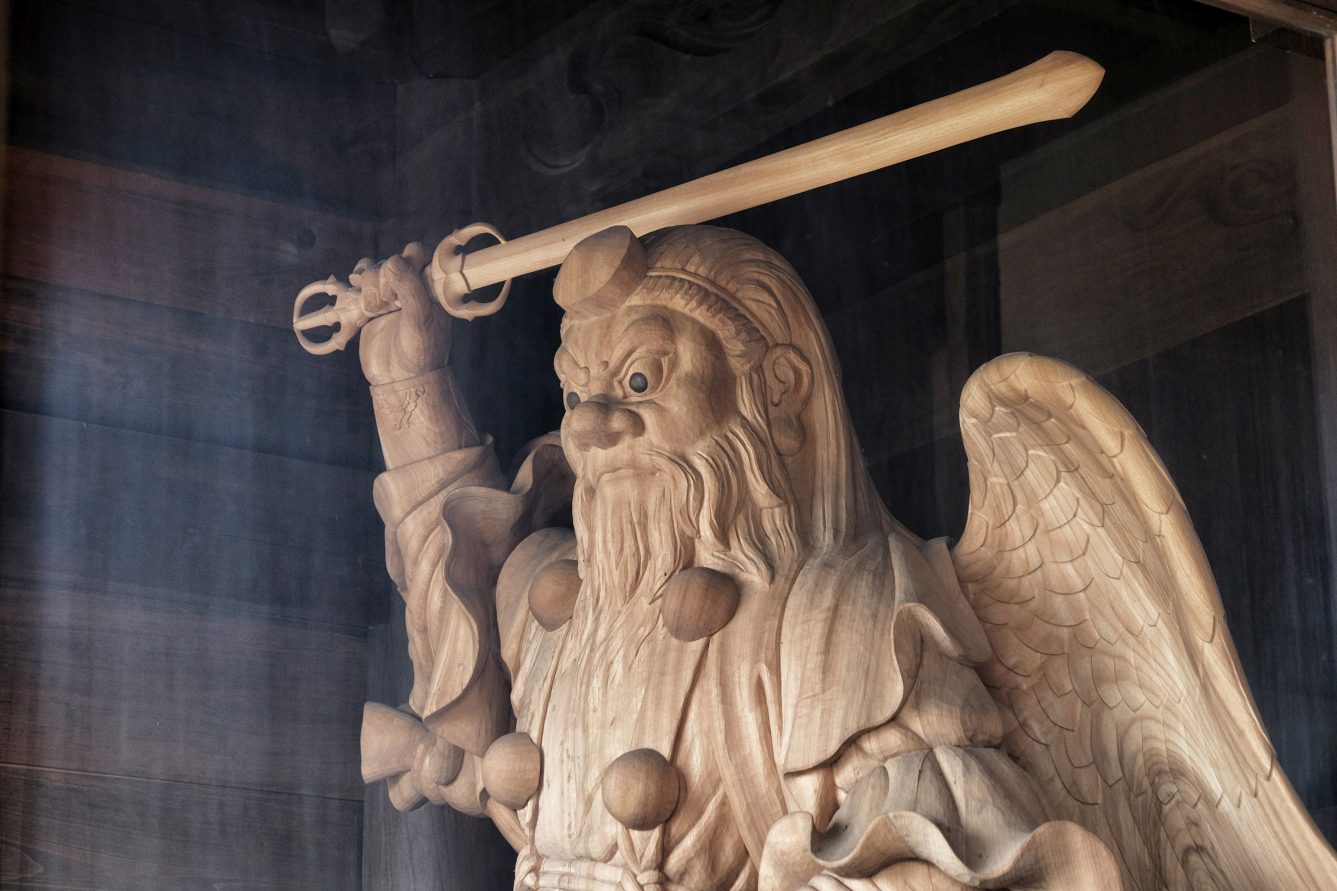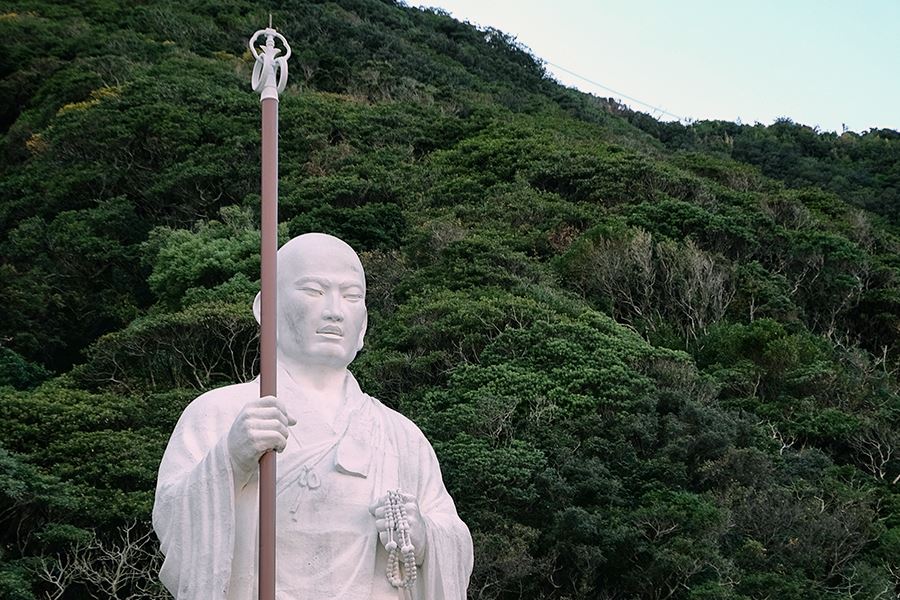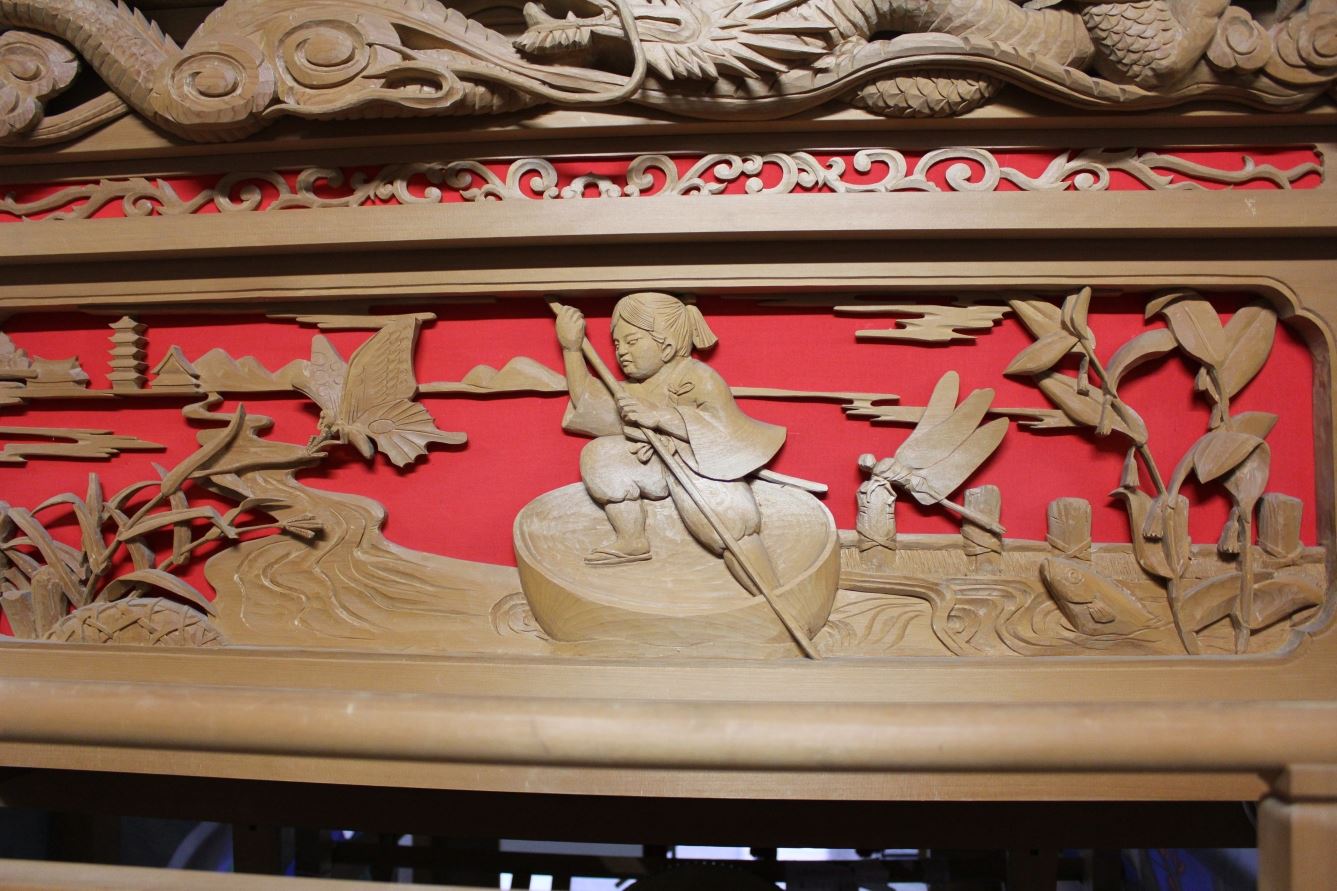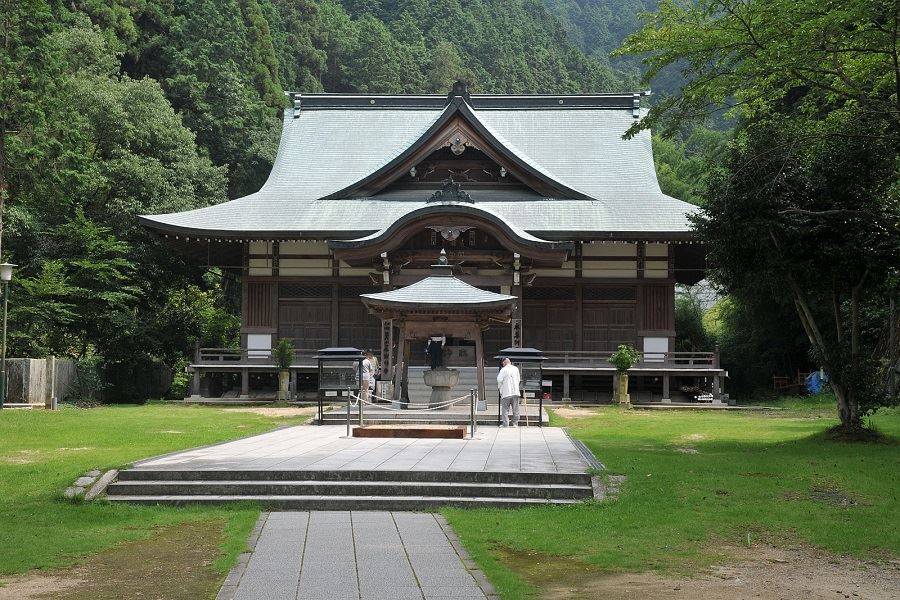Temple 63, Kichijō-ji
Home » Temple 63, Kichijō-ji
Temple 63, Kichijō-ji
Kichijō-ji is Temple No. 63 on the Shikoku pilgrimage, or Henro. It stands between busy Route 11 and the JR Yosan railway line, with a number of tall trees growing in its precincts, which give it a luxuriously leafy atmosphere.
What to see
Legend has it that when Kukai visited, he found a cypress that radiated light. He carved a statue of Bishamonten from this sacred tree, and also carved statues of Kichijōten and Zennishidōji as flanking deities. He built this temple as a place to pray for relief from poverty. Every temple has a votive image representing something of Buddhist significance, and Kichijō-ji is unique in having a Bishamon statue. Bishamon is one of the Seven Lucky Gods revered in Japan. They originated in India and China from various Hindu and Taoist backgrounds. Bishamon’s wife is Kichijōten (Lakshmi), and the temple takes its name from her. Bishamon is a warrior who serves as guardian of the places where Buddha preaches. There’s a little eight-sided building with a Chinese appearance which holds statues of the six lucky gods other than Bishamon.
In the grounds of the temple, you’ll see a stone with a hole in it. It’s said that if you put your kongozue or pilgrim’s staff into it, your prayers will be granted. Next to this stone is an elegant statue of Kichijōten standing on a stone plinth that you can pass through. Going through it relieves you of poverty, so by all means, pass under Kichijōten.
The stone elephants in front of the main gate are another reminder of the Indian background of this temple.
History
Originally Kichijō-ji was located at a place southeast of the present location. It was prosperous, with twenty-one sub-temples. However, during the invasion of Shikoku by Toyotomi Hideyoshi in 1585, all the buildings were burned down. The temple was rebuilt in its current location in 1659 during the Edo period.
One of the treasures held by the temple is a statue of St. Mary, a beautiful white figure about 30 cm high. The captain of a Spanish ship that was wrecked off Kōchi gave it to Chōsokabe Motochika. Motochika was unaware that it was a Christian statue and mistook it for the Buddhist deity Kannon. The statue was handed down for generations as a statue of Kannon, who resembles Kichijōten.
Information
Name in Japanese: 吉祥寺
Pronunciation: kichijō-ji
Address: 104 Himi, Saijo, Ehime 793-0072
Related Tours

Experience the most beautiful and interesting temples of the Shikoku Pilgrimage in seven days.

A tour for families or friends, staying in the most characterful kominka and ryokan of Shikoku.

Visit the most beautiful and interesting temples of the Shikoku Pilgrimage and walk the toughest trails.

